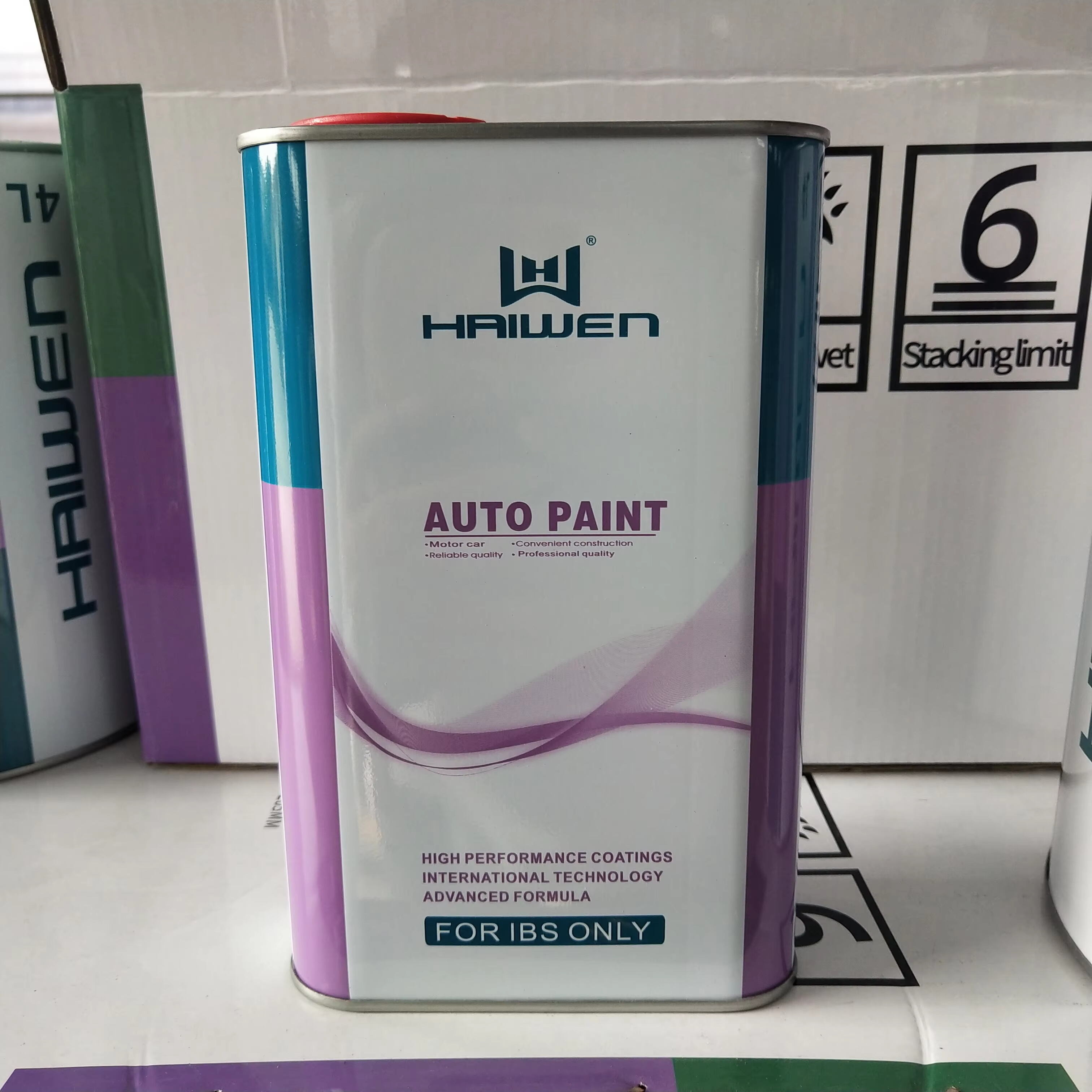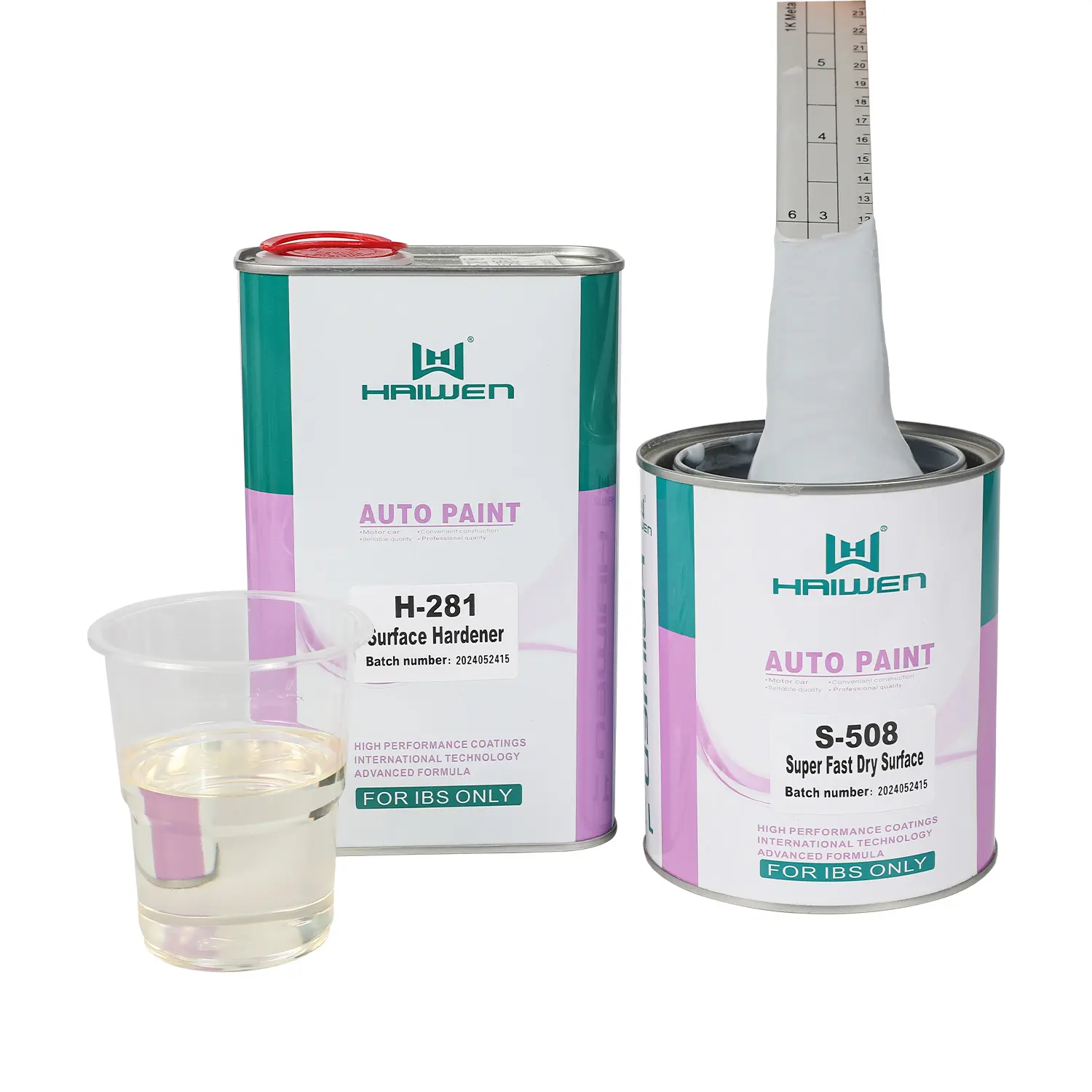Putty as a base for a flawless finish
Every perfect automotive paint job starts with a strong foundation. Automotive Putty is the unseen hero that ensures surfaces are smooth, even, and free from visible imperfections. Before any primer, basecoat, or clear coat is applied, putty levels dents, fills scratches, and creates a uniform surface ready for painting. Without this step, even the most advanced coatings cannot achieve their full potential. Automotive Putty not only improves appearance but also enhances durability by preventing cracks and weak spots in the coating system. In many ways, putty is the foundation of professional automotive refinishing.
Filling dents, leveling surfaces, preventing imperfections
Filling dents and scratches effectively
Cars are exposed to impacts, scratches, and small dents that compromise the surface. Automotive Putty provides the essential function of filling these irregularities. By creating a uniform layer, it eliminates depressions that would otherwise show through paint layers. This ensures that the final surface is smooth and flawless, giving the vehicle a professional finish.
Leveling uneven areas before painting
Why is leveling so important in automotive refinishing? Even small inconsistencies can cause uneven reflections under light. Automotive Putty corrects these irregularities by blending the surface into a single flat plane. When properly applied, the result is a paint-ready surface that maximizes gloss and clarity. This step ensures customers receive a finish that looks pristine under any condition.
Preventing imperfections from reappearing
Beyond simply filling and leveling, Automotive Putty prevents imperfections from resurfacing after painting. Without putty, minor dents or scratches might remain visible under multiple layers of paint. With putty, the surface becomes stable and resistant to shrinkage or distortion. This makes it an essential step in delivering consistent and long-lasting results.

Polyester putty, lightweight putty, aluminum putty
Polyester putty for general repairs
Polyester putty is one of the most commonly used types in body shops. It offers strong adhesion, quick drying, and easy sanding properties. Automotive Putty of this type is ideal for repairing moderate dents and scratches, providing a stable base for subsequent coatings. Its balance of affordability and performance makes it a reliable choice for many applications.
Lightweight putty for ease of use
When speed and efficiency are critical, lightweight putty becomes the preferred option. This form of Automotive Putty is easier to spread, dries faster, and sands with less effort. It is especially useful in large surface repairs where workability is key. Despite being light, it still provides sufficient strength for most automotive refinishing projects.
Aluminum putty for reinforced durability
Aluminum-based putty is designed for high-strength repairs. With the addition of metallic particles, this type of Automotive Putty provides enhanced durability and heat resistance. It is commonly used in areas exposed to stress or higher temperatures. Aluminum putty ensures that repairs remain intact under challenging conditions, adding reliability to the refinishing process.
Surface preparation - putty application - sanding → primer
Preparing the surface correctly
The success of putty application begins with preparation. Surfaces must be cleaned, sanded, and free of grease, dust, or rust. Automotive Putty adheres best to properly prepared areas, ensuring strong bonding. Skipping this step can lead to weak adhesion and eventual cracking. Careful preparation creates the foundation for lasting results.
Applying putty with precision
How should putty be applied for maximum effectiveness? Automotive Putty must be spread evenly using a spatula or spreader. Thin layers are preferable, as applying too thickly can lead to shrinkage or poor curing. Multiple thin coats provide better results and minimize the chance of imperfections appearing later. Precision in this step ensures a consistent and smooth repair.
Sanding and priming for a flawless base
Once cured, the putty surface must be sanded to achieve the desired smoothness. Proper sanding eliminates excess material and blends the repair into the surrounding area. After sanding, the application of primer seals the putty and prepares the surface for paint. Automotive Putty used in this sequence ensures the base is strong, uniform, and ready for topcoats.
Shrinkage, pinholes, cracking
Preventing shrinkage in repairs
Shrinkage is one of the most common issues in putty application. This occurs when too much material is applied at once or when curing conditions are poor. Automotive Putty applied in controlled, thin layers prevents shrinkage and ensures the repair retains its shape. Proper mixing ratios with hardener also reduce this risk.
Addressing pinholes effectively
Pinholes often appear when air becomes trapped during application. These small cavities compromise the appearance of the finish if left untreated. By applying Automotive Putty carefully and sanding between layers, technicians can eliminate pinholes. Correcting this issue early prevents visible flaws in the final paint.
Avoiding cracking for long-term durability
Cracking occurs when putty is improperly mixed, applied too thickly, or not cured correctly. Automotive Putty must be handled with precision to avoid these problems. Using quality products and following application guidelines minimizes cracking, ensuring repairs remain strong and invisible under paint.
A quality finish begins with quality putty
The foundation of professional results
Automotive Putty is more than just a filler—it is the base that determines the success of every refinishing project. By filling dents, leveling surfaces, and preventing imperfections, it ensures a flawless finish that endures. Skipping or neglecting this step compromises the entire paint system.
The essential step in automotive refinishing
No matter the type—polyester, lightweight, or aluminum—Automotive Putty provides the foundation for reliable results. Proper application, combined with sanding and priming, guarantees that the final finish meets professional standards. A quality finish always begins with quality putty, making it indispensable in automotive surface repair.
FAQs
What is the main purpose of Automotive Putty
Automotive Putty fills dents, scratches, and uneven areas on a car’s surface, creating a smooth and stable base for primer and paint. It ensures that imperfections do not reappear after refinishing.
Which type of Automotive Putty should I choose
Polyester putty works for general repairs, lightweight putty is best for easy sanding and large areas, and aluminum putty provides extra strength for high-stress or high-temperature zones.
What are the common problems when using Automotive Putty
Issues such as shrinkage, pinholes, and cracking may occur if the product is applied too thickly or without proper preparation. Following correct application steps reduces these risks.
Why is Automotive Putty essential for professional refinishing
Without Automotive Putty, even minor imperfections would remain visible under paint. It provides the foundation for durability and a flawless finish, ensuring long-lasting and professional results.



